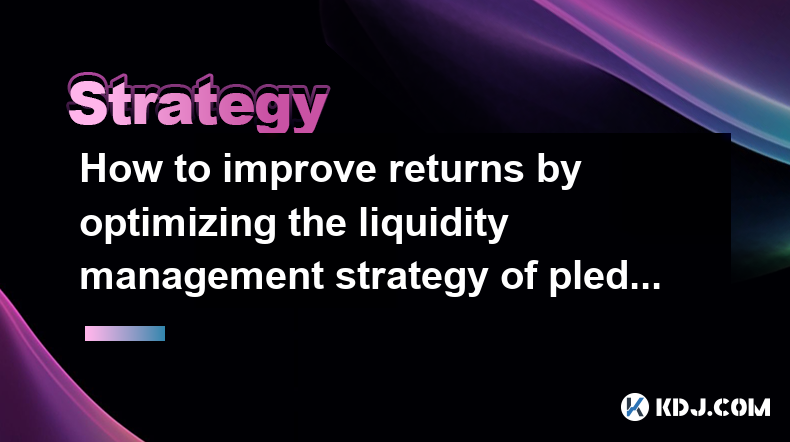-
 Bitcoin
Bitcoin $84,275.9738
-1.18% -
 Ethereum
Ethereum $1,573.8784
-1.51% -
 Tether USDt
Tether USDt $1.0000
0.01% -
 XRP
XRP $2.0508
-1.47% -
 BNB
BNB $590.3165
0.36% -
 Solana
Solana $136.8073
-1.57% -
 USDC
USDC $1.0000
0.02% -
 TRON
TRON $0.2456
0.95% -
 Dogecoin
Dogecoin $0.1541
-2.45% -
 Cardano
Cardano $0.6147
-1.97% -
 UNUS SED LEO
UNUS SED LEO $9.3554
-0.04% -
 Chainlink
Chainlink $12.9524
1.69% -
 Avalanche
Avalanche $19.3399
-1.65% -
 Toncoin
Toncoin $2.9731
0.19% -
 Stellar
Stellar $0.2417
-1.92% -
 Shiba Inu
Shiba Inu $0.0...01220
0.27% -
 Sui
Sui $2.0970
-2.03% -
 Hedera
Hedera $0.1613
-2.12% -
 Bitcoin Cash
Bitcoin Cash $334.7255
-0.82% -
 Polkadot
Polkadot $3.8075
1.75% -
 Hyperliquid
Hyperliquid $17.7039
-1.30% -
 Litecoin
Litecoin $75.8145
-0.21% -
 Dai
Dai $0.9999
-0.01% -
 Bitget Token
Bitget Token $4.4095
-1.49% -
 Ethena USDe
Ethena USDe $0.9992
0.00% -
 Pi
Pi $0.6261
-3.11% -
 Monero
Monero $214.8222
0.77% -
 Uniswap
Uniswap $5.1777
-0.97% -
 Pepe
Pepe $0.0...07374
2.27% -
 Aptos
Aptos $4.9197
2.06%
How to improve returns by optimizing the liquidity management strategy of pledged coins?
Optimizing pledged coin liquidity maximizes returns by strategically using DeFi or centralized exchanges, balancing risk tolerance with factors like interest rates, impermanent loss, and gas fees for personalized, adaptable strategies.
Mar 17, 2025 at 09:36 am

How to Improve Returns by Optimizing the Liquidity Management Strategy of Pledged Coins?
Key Points:
- Understanding the risks and rewards associated with pledging cryptocurrencies.
- Exploring various liquidity management strategies for pledged coins, including decentralized finance (DeFi) protocols and centralized exchanges.
- Analyzing the impact of different strategies on returns, considering factors like interest rates, impermanent loss, and gas fees.
- Developing a personalized liquidity management strategy based on risk tolerance, investment goals, and market conditions.
- Regularly monitoring and adjusting the strategy to maximize returns and mitigate risks.
Improving Returns by Optimizing the Liquidity Management Strategy of Pledged Coins:
The cryptocurrency landscape offers numerous opportunities for generating passive income through staking and lending. However, effectively managing the liquidity of your pledged coins is crucial to maximize returns while mitigating risks. This involves carefully selecting strategies that align with your risk tolerance and investment goals. Optimizing this strategy is a multifaceted process requiring careful consideration of several factors.
- Understanding the Risks and Rewards of Pledged Coins:
Before delving into liquidity management strategies, it’s paramount to comprehend the inherent risks and potential rewards associated with pledging cryptocurrencies. Pledging, or staking, involves locking up your coins for a specified period to participate in the consensus mechanism of a blockchain network, often receiving rewards in the form of newly minted tokens or transaction fees. The rewards can be substantial, offering significantly higher returns than traditional savings accounts. However, several risks must be considered.
First, there's the risk of impermanent loss if you participate in liquidity pools. Impermanent loss occurs when the price of the assets you've provided to the liquidity pool changes significantly relative to each other during the time they are locked. This can result in a net loss compared to simply holding the assets. Understanding how different pools and strategies mitigate or exacerbate this risk is critical. Secondly, smart contract risks are ever-present. Bugs or vulnerabilities in the smart contracts governing the DeFi protocol you use could lead to the loss of your pledged funds. Thorough due diligence, including auditing reports and community reputation, is crucial before committing your assets.
Thirdly, platform risk is a major consideration, particularly when using centralized exchanges. The exchange's solvency and security are directly tied to the safety of your funds. Choosing reputable and well-established exchanges significantly reduces this risk. Finally, the volatility of the cryptocurrency market itself poses a risk. Even with a well-structured liquidity management strategy, the value of your pledged coins, and consequently your returns, can fluctuate significantly. A robust strategy considers these fluctuations and incorporates risk management techniques. Diversification across different protocols and assets is a key element in managing this risk. A deep understanding of these risks and the potential rewards allows for informed decision-making and the creation of a personalized strategy.
- Exploring Various Liquidity Management Strategies:
Numerous strategies exist for managing the liquidity of your pledged coins, each with its own set of advantages and disadvantages. These strategies can be broadly categorized into those utilizing decentralized finance (DeFi) protocols and those leveraging centralized exchanges.
DeFi protocols offer a range of options, including liquidity pools, lending platforms, and yield farming. Liquidity pools require you to provide pairs of tokens, earning trading fees in return. However, the risk of impermanent loss must be carefully considered. Lending platforms allow you to lend your coins to borrowers, earning interest in the process. The interest rates offered vary depending on the platform and the cryptocurrency being lent. Yield farming involves strategically moving your assets between different DeFi protocols to maximize returns. This strategy often involves complex interactions with various protocols and carries a higher risk due to the complexity involved.
Centralized exchanges also offer staking and lending options, often with simpler user interfaces and potentially higher interest rates than some DeFi protocols. However, the counterparty risk associated with using a centralized exchange is significant. The exchange's financial stability and security are critical factors to consider. Centralized lending platforms generally offer higher liquidity compared to DeFi options, allowing for easier access to your funds when needed.
- Analyzing the Impact of Different Strategies on Returns:
Analyzing the impact of various liquidity management strategies on returns requires a multi-faceted approach. Key factors to consider include the interest rates offered by different platforms, the potential for impermanent loss in liquidity pools, and the transaction fees (gas fees) associated with interacting with DeFi protocols. Each strategy’s potential return must be weighed against its associated risks. High-yield strategies often come with higher risks, while lower-yield strategies may offer greater security.
For example, a high-yield strategy might involve participating in multiple yield farming opportunities, potentially earning significant returns but also incurring higher gas fees and exposing you to greater smart contract risks. Conversely, a low-yield strategy might involve simply staking your coins on a reputable centralized exchange, offering lower returns but higher security and lower transaction costs. The optimal strategy depends on individual risk tolerance and investment goals. A thorough understanding of the factors impacting returns is essential for making informed decisions.
- Developing a Personalized Liquidity Management Strategy:
Developing a personalized liquidity management strategy requires careful consideration of your risk tolerance, investment goals, and market conditions. Your risk tolerance determines the level of risk you're willing to accept in pursuit of higher returns. If you're risk-averse, a conservative strategy focusing on lower-yield, more secure options might be suitable. If you're risk-tolerant, you might consider more aggressive strategies with potentially higher returns but also greater risks. Your investment goals influence the timeframe for your investment and the desired level of returns. Short-term goals may require strategies that prioritize liquidity, while long-term goals can accommodate strategies with lower liquidity but higher potential returns. Market conditions, such as the prevailing interest rates and cryptocurrency volatility, also impact the effectiveness of different strategies. Regularly monitoring and adjusting your strategy based on these conditions is essential.
- Regularly Monitoring and Adjusting the Strategy:
Regular monitoring and adjustment are critical components of any successful liquidity management strategy. This involves tracking your returns, analyzing the performance of different strategies, and adapting your approach based on market conditions and changes in risk appetite. Regularly reviewing your portfolio’s performance allows for timely identification of underperforming strategies and the opportunity to re-allocate your assets to more profitable ventures. Market conditions can shift rapidly in the cryptocurrency space, and failing to adjust your strategy accordingly can lead to significant losses. Furthermore, the emergence of new DeFi protocols and innovative liquidity management tools necessitates continuous learning and adaptation. Staying informed about the latest developments in the cryptocurrency market is crucial for maintaining a competitive edge.
FAQs:
Q: What are the best platforms for staking and lending cryptocurrencies?
A: There is no single "best" platform, as the optimal choice depends on individual risk tolerance, investment goals, and the specific cryptocurrency being staked or lent. Reputable centralized exchanges often offer user-friendly interfaces and potentially higher interest rates, but carry platform risk. DeFi protocols offer greater decentralization and potentially higher yields but involve higher technical complexity and smart contract risks. Thorough research and due diligence are crucial before selecting any platform.
Q: How can I mitigate the risk of impermanent loss?
A: Impermanent loss is inherent to liquidity pools. However, several strategies can mitigate its impact. These include selecting liquidity pools with assets that are expected to maintain a relatively stable price ratio, choosing pools with lower volatility assets, and understanding the specific mechanics of the liquidity pool you are using. Furthermore, some strategies, such as utilizing hedging techniques, can partially offset impermanent loss.
Q: What are gas fees, and how do they impact returns?
A: Gas fees are transaction fees paid to miners or validators on a blockchain network for processing transactions. In the context of DeFi, gas fees are incurred when interacting with smart contracts, such as depositing or withdrawing funds from liquidity pools. These fees can significantly reduce the overall returns, particularly in high-transaction volume environments. Selecting cost-effective protocols and strategically timing transactions can help minimize gas fee expenses.
Q: How often should I rebalance my liquidity management strategy?
A: The frequency of rebalancing depends on your risk tolerance, investment goals, and market conditions. Regular monitoring is essential, and rebalancing might occur anywhere from weekly to quarterly, or even more frequently if market conditions are highly volatile. The goal is to maintain a portfolio aligned with your risk tolerance and investment goals, adapting to changing market conditions.
Q: What are the legal and regulatory implications of staking and lending cryptocurrencies?
A: The legal and regulatory landscape for cryptocurrencies is constantly evolving and varies across jurisdictions. It is crucial to understand the applicable laws and regulations in your region before engaging in staking or lending activities. Tax implications are another important consideration, as gains from staking and lending are typically taxable income. Seeking professional financial and legal advice is recommended.
Disclaimer:info@kdj.com
The information provided is not trading advice. kdj.com does not assume any responsibility for any investments made based on the information provided in this article. Cryptocurrencies are highly volatile and it is highly recommended that you invest with caution after thorough research!
If you believe that the content used on this website infringes your copyright, please contact us immediately (info@kdj.com) and we will delete it promptly.
- XRP/BTC Is Back in a Familiar Position — and It's Not a Bad One
- 2025-04-20 21:00:13
- JAN3 CEO Samson Mow Claims Ethereum, XRP, and Solana Are Overvalued When Measured Against Bitcoin's Fixed Supply Model
- 2025-04-20 21:00:13
- title: Bitcoin (BTC) Will Benefit From Impending Economic Cataclysm, Says Best-Selling Author Robert Kiyosaki
- 2025-04-20 20:55:13
- Bitcoin and Crypto Prices Tread Water After Trump Explores Firing Jerome Powell
- 2025-04-20 20:55:13
- How the Top 10 Cryptocurrencies Are Performing Today (April 20, 2025)
- 2025-04-20 20:50:13
- The Late April 2025 Crypto Landscape: A Tale of Contrasting Fortunes
- 2025-04-20 20:50:13
Related knowledge

Is it a risk that SHIB's derivatives position is 3 times that of the spot?
Apr 20,2025 at 12:35am
Is it a risk that SHIB's derivatives position is 3 times that of the spot? The cryptocurrency market is known for its volatility and high-risk nature, and Shiba Inu (SHIB) is no exception. One of the metrics that traders and investors closely monitor is the ratio of derivatives to spot positions. SHIB's derivatives position being three times that of the...

What does SHIB's Cardano coefficient below 0.3 indicate?
Apr 19,2025 at 08:00am
What does SHIB's Cardano coefficient below 0.3 indicate? The Cardano coefficient, often used within the cryptocurrency community, is a metric that helps investors and analysts understand the correlation between different cryptocurrencies. When it comes to SHIB (Shiba Inu) and its Cardano coefficient falling below 0.3, this indicates a relatively low cor...

Is SHIB's TVL suddenly increasing by 20% a positive signal?
Apr 20,2025 at 08:07am
The sudden increase of SHIB's TVL (Total Value Locked) by 20% has sparked a lot of interest and speculation within the cryptocurrency community. TVL is an important metric that represents the total amount of assets locked in a DeFi protocol, indicating the level of user engagement and trust in the platform. In this article, we will explore whether this ...

Is the sudden decrease in liquidity of SHIB stablecoin pool dangerous?
Apr 20,2025 at 02:15pm
The sudden decrease in liquidity of the SHIB stablecoin pool has raised concerns among investors and market participants. Liquidity refers to the ability to buy or sell an asset without causing a significant price change, and a decrease in liquidity can have serious implications for the stability and functionality of a cryptocurrency ecosystem. In this ...

What to do when SHIB 1-hour level shows TD9 sequence?
Apr 20,2025 at 03:21pm
When the SHIB 1-hour level shows a TD9 sequence, it's important for traders to understand what this technical indicator means and how they can use it to inform their trading strategies. The TD9, or Tom DeMark Sequential, is a popular tool among traders for identifying potential reversals in price trends. In this article, we will explore what to do when ...

Is the golden cross of SHIB's EMA12 and EMA26 effective on the daily line?
Apr 19,2025 at 08:07pm
The golden cross of SHIB's EMA12 and EMA26 on the daily line is a topic of interest among cryptocurrency traders and investors. This technical indicator is often used to predict bullish trends in the market, but its effectiveness can vary depending on various factors. In this article, we will delve into the specifics of the golden cross for SHIB, its hi...

Is it a risk that SHIB's derivatives position is 3 times that of the spot?
Apr 20,2025 at 12:35am
Is it a risk that SHIB's derivatives position is 3 times that of the spot? The cryptocurrency market is known for its volatility and high-risk nature, and Shiba Inu (SHIB) is no exception. One of the metrics that traders and investors closely monitor is the ratio of derivatives to spot positions. SHIB's derivatives position being three times that of the...

What does SHIB's Cardano coefficient below 0.3 indicate?
Apr 19,2025 at 08:00am
What does SHIB's Cardano coefficient below 0.3 indicate? The Cardano coefficient, often used within the cryptocurrency community, is a metric that helps investors and analysts understand the correlation between different cryptocurrencies. When it comes to SHIB (Shiba Inu) and its Cardano coefficient falling below 0.3, this indicates a relatively low cor...

Is SHIB's TVL suddenly increasing by 20% a positive signal?
Apr 20,2025 at 08:07am
The sudden increase of SHIB's TVL (Total Value Locked) by 20% has sparked a lot of interest and speculation within the cryptocurrency community. TVL is an important metric that represents the total amount of assets locked in a DeFi protocol, indicating the level of user engagement and trust in the platform. In this article, we will explore whether this ...

Is the sudden decrease in liquidity of SHIB stablecoin pool dangerous?
Apr 20,2025 at 02:15pm
The sudden decrease in liquidity of the SHIB stablecoin pool has raised concerns among investors and market participants. Liquidity refers to the ability to buy or sell an asset without causing a significant price change, and a decrease in liquidity can have serious implications for the stability and functionality of a cryptocurrency ecosystem. In this ...

What to do when SHIB 1-hour level shows TD9 sequence?
Apr 20,2025 at 03:21pm
When the SHIB 1-hour level shows a TD9 sequence, it's important for traders to understand what this technical indicator means and how they can use it to inform their trading strategies. The TD9, or Tom DeMark Sequential, is a popular tool among traders for identifying potential reversals in price trends. In this article, we will explore what to do when ...

Is the golden cross of SHIB's EMA12 and EMA26 effective on the daily line?
Apr 19,2025 at 08:07pm
The golden cross of SHIB's EMA12 and EMA26 on the daily line is a topic of interest among cryptocurrency traders and investors. This technical indicator is often used to predict bullish trends in the market, but its effectiveness can vary depending on various factors. In this article, we will delve into the specifics of the golden cross for SHIB, its hi...
See all articles























































































